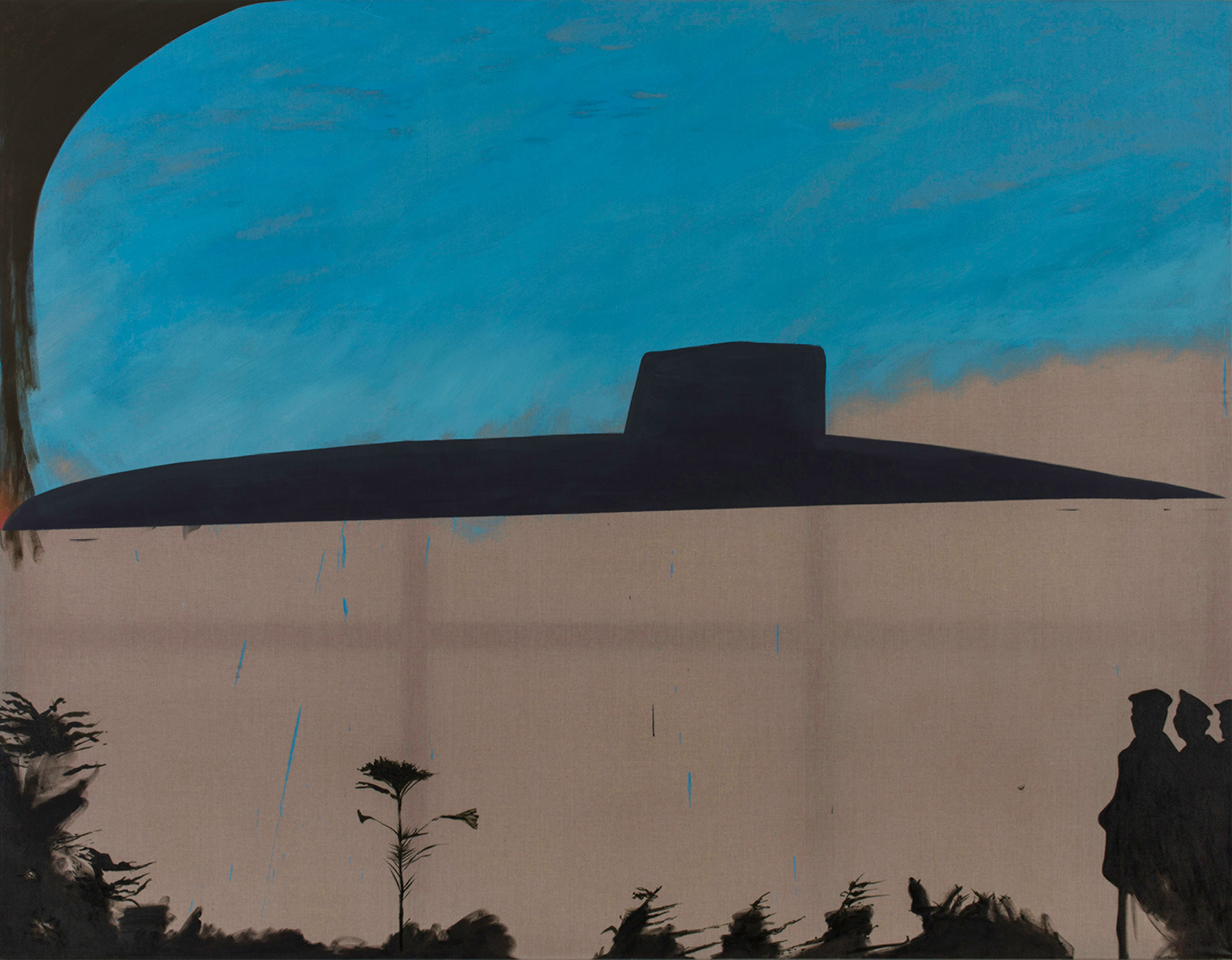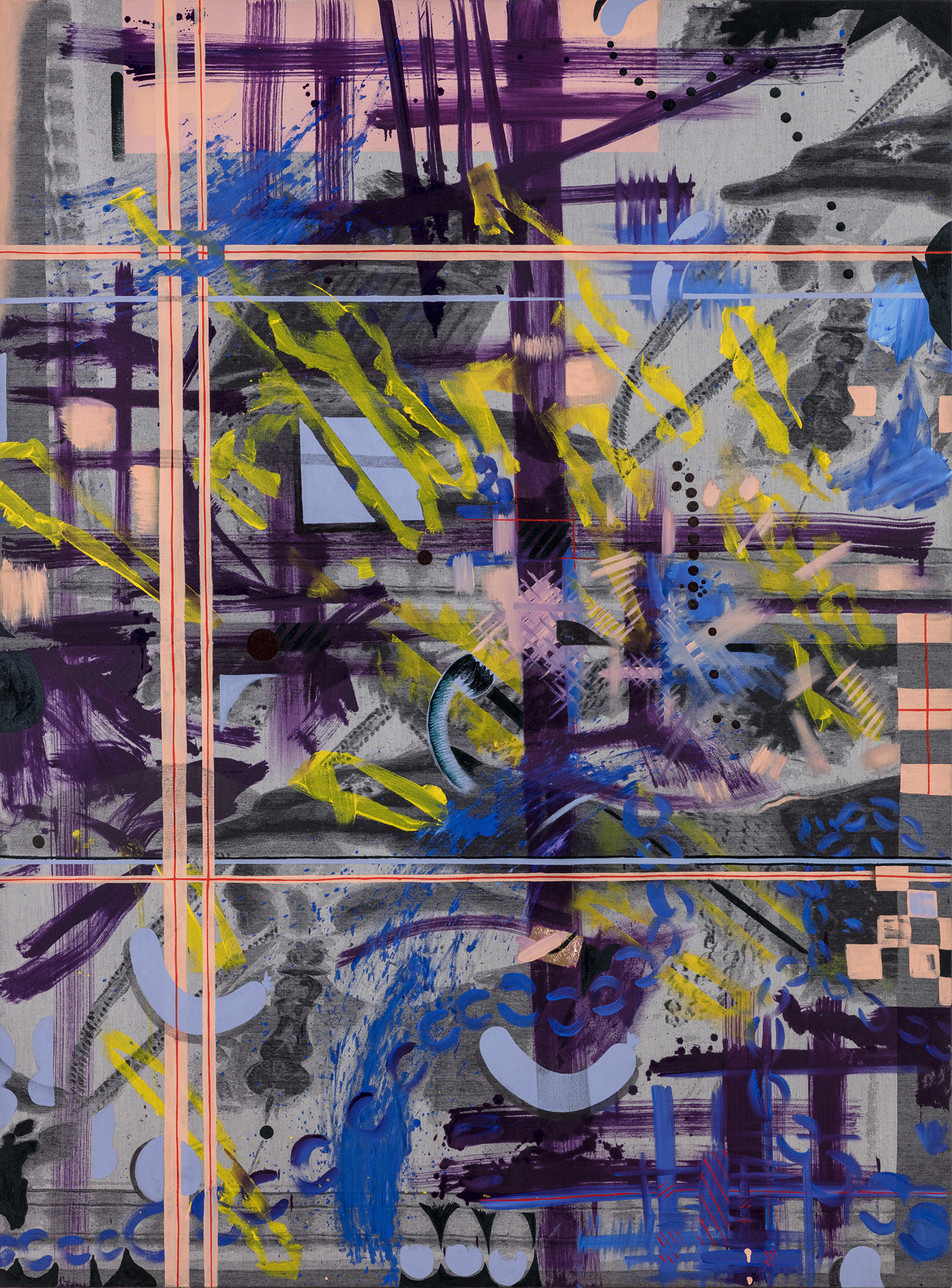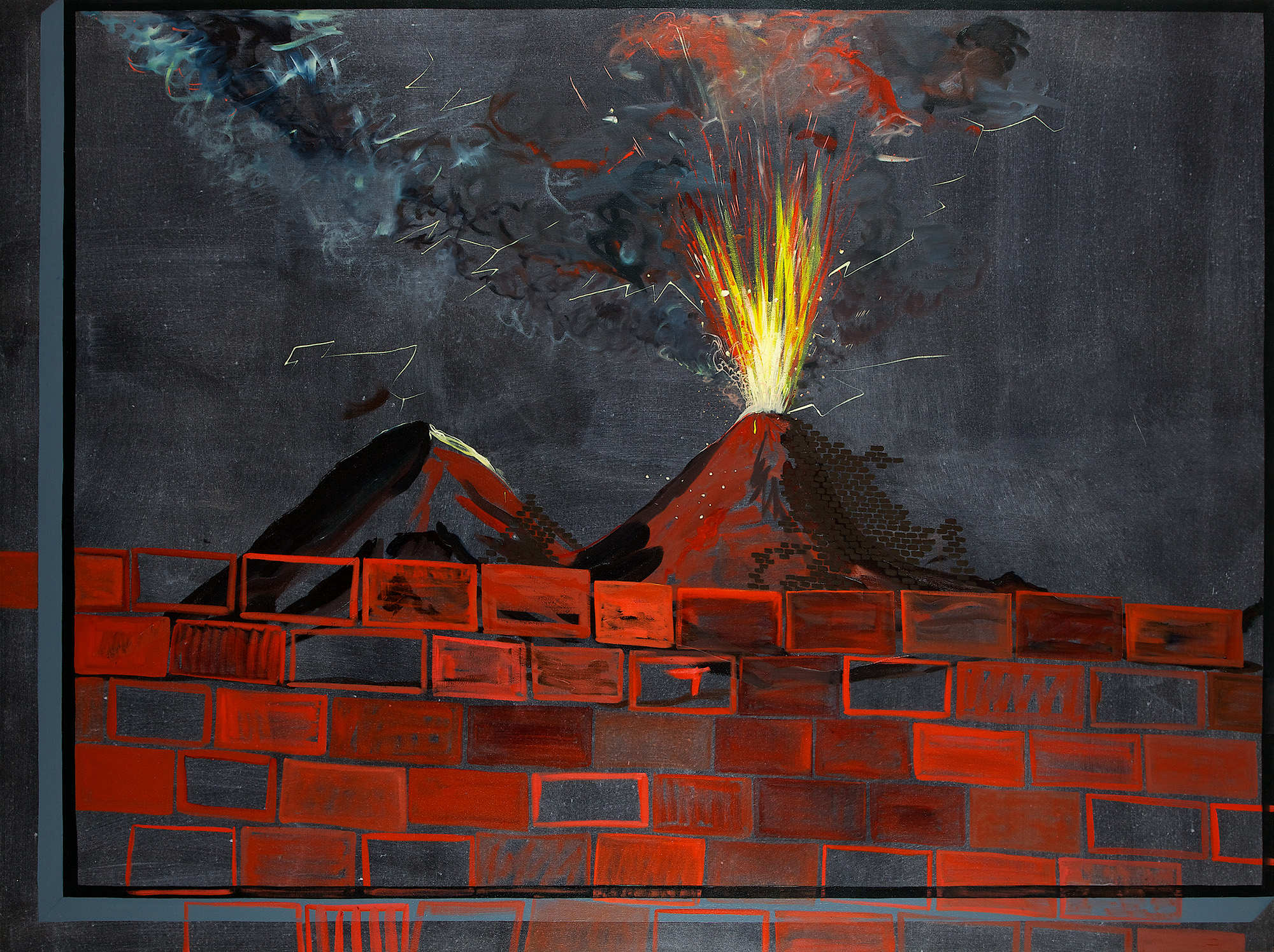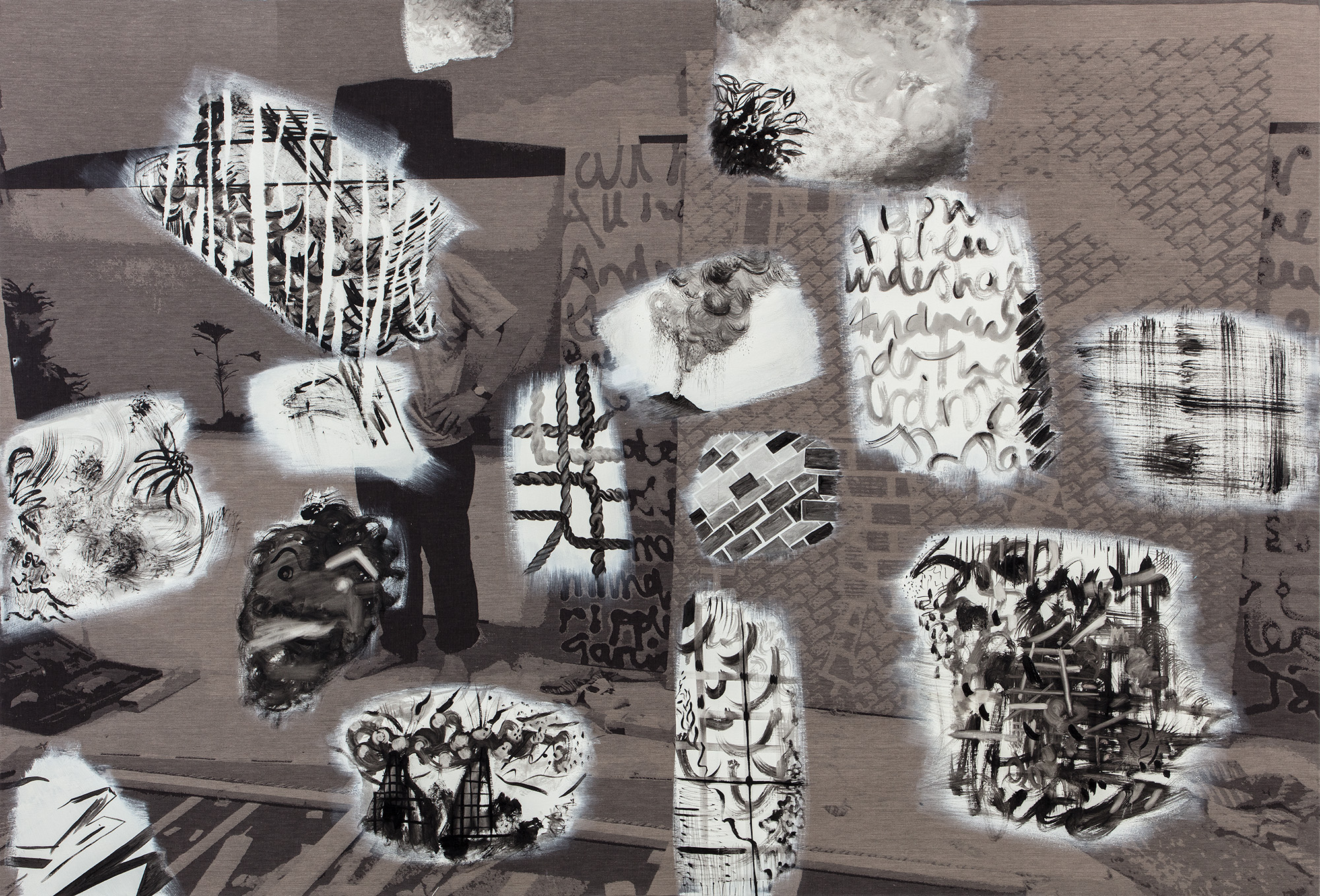Seduction &
destruction: the paintings of Caragh Thuring
In the first major survey show of the artist’s body of work, Hastings Contemporary host an exhibition of Belgian artist Caragh Thuring’s meditations upon matter, both man- and earth-made. For recessed.space, Will Wiles visited to explore the meanings of such uncanny and seemingly chaotic painterly collages.
“The submarines
are very timely again,” Caragh Thuring remarked drily at the press view of her
new show at Hastings Contemporary. As a child, Thuring watched nuclear submarines
slink around the lochs of the Scottish coast. The natural beauty of the
landscape was marked by the unnatural architecture needed to sustain these
weapons. The ominous silhouette of a submarine recurs in her paintings, most
notably in the large canvas The Silent Service, and as her show opens in
Hastings, the apocalypse again casts a lengthening shadow, as Russia’s leaders
turn to nuclear brinkmanship to salvage their failing invasion of Ukraine.
![]()
fig.i
The submarines – and the weapons they carry – never went away between the Cold War and today, they just kept a lower profile. That’s what they do, of course, they keep a low profile, they lurk, they disappear from view, while the death they carry remains the same. In this, they have some surprising affinities with another Thuring motif, the volcano. Both are characterised by hidden stores of awful destructive power. And yet in normal circumstances they betray little of this power.
Much of Thuring’s work lingers on the mechanical and the industrial. Ophaal Brug met Fonkelingen, a stark painting of a lifting bridge, dominates the main exhibition space, but the brute superstructure is balanced by delicate, wavering railings and little yellow lights. Lighterman is also dominated by heavy metal, which features a somewhat constructivist crane, but again comes across more cheerful or fond than industrial.
![]()
![]()
figs.ii,iii
These are all
works resolutely based on the artificial, but while what really animates
Thuring’s work is a strange interplay between the natural and the man-made.
This is not pointed – “I’m not interested in being didactic,” she says – but it
is pervasive. Thuring’s continual orbiting of certain ideas betrays something
of her steady, deliberate creative process. The paintings and drawings are
often energetic and fast of hand – she says that they can take between a day
and two years to complete – but the thoughts behind them are slower and more
careful. Thuring says she can sit with an idea for years before acting on it,
and the same concepts circle and recombine: “These things brew up over time in
different concoctions,” as she puts it.
In the numbered pen and ink series Deck, a worker on a boat entangles and disappears into the complexity of the boat they are working on, with the boundary between them unclear. The relationships are often deliberately unclear and provocative, such as in Dutch Details, a window frame with a detailed foreground of plant life, which references the Dutch custom of carefully posed windowsill displays and toys with the indoor and the outdoor. A similar vibe holds over Palm Springs, an attractive assemblage that lingers on strange, cultured, topiary-like vegetation: plants made into sculptural objects.
![]()
![]()
Bricks and brick walls recur as a particular symbol of this paradoxical territory. Brick is, Thuring says, “the perfect example of something that’s natural and man-made”, the materials of the earth given regularity and purpose by human industry. Which brings us back to the volcanoes. Volcanoes are among the landforms most resistant to any kind of human involvement or alteration – not unlike nuclear weapons, if they’re in full flow, our best hope is to be elsewhere.
In a way the volcano is the exception that proves Thuring’s rule, and she repeatedly plays with the idea, bringing together unruly erupting volcanoes and obedient, orderly brick. This leads to some of the more anarchic and unsettling paintings in the show. Thuring places blazing volcanoes behind brick walls, and in one strange, dreamlike painting presents us with a brick-built volcano, an erupting pyramid.
![]()
For Thuring, the volcano offers a “vast language” of symbolism. “They represent many things,” she says, being both seductive and destructive: “They’re sexual, they’re emotional.” Even if they scorn and overwhelm the man-made, they have an agency and an artificiality of their own, without our involvement. Their destructiveness does not lead to nothing, it reshapes and makes landscapes of its own. “They are architectural, they build themselves,” she says.
It might be something of a niche within landscape painting but there is a long tradition of volcano painting, in particular connected to the Enlightenment Grand Tour of Italy and pursuit of the sublime. Thuring is influenced by many of the same landscapes – Vesuvius and the uncanny territory of Campi Fleigre – and fond of the kitschy volcano paintings made for tourists, but doesn’t see herself in the same lineage.
![]()
With this in mind, one wonders if her violent but approachable volcanoes are more a comment on the man-made side of the paradox. Here is a surrogate for the errant, unpredictable, libidinal, and destructive sides of our industrial civilisation, which grooms and refines and tunes the world even as it brews up ways to destroy it. The submarine, for all its horrible capability, is too sleek and civilised a symbol, and the volcano is needed to bring it some kind of balance – an uneasy balance, naturally. Or unnaturally.

fig.i
The submarines – and the weapons they carry – never went away between the Cold War and today, they just kept a lower profile. That’s what they do, of course, they keep a low profile, they lurk, they disappear from view, while the death they carry remains the same. In this, they have some surprising affinities with another Thuring motif, the volcano. Both are characterised by hidden stores of awful destructive power. And yet in normal circumstances they betray little of this power.
Much of Thuring’s work lingers on the mechanical and the industrial. Ophaal Brug met Fonkelingen, a stark painting of a lifting bridge, dominates the main exhibition space, but the brute superstructure is balanced by delicate, wavering railings and little yellow lights. Lighterman is also dominated by heavy metal, which features a somewhat constructivist crane, but again comes across more cheerful or fond than industrial.


figs.ii,iii
In the numbered pen and ink series Deck, a worker on a boat entangles and disappears into the complexity of the boat they are working on, with the boundary between them unclear. The relationships are often deliberately unclear and provocative, such as in Dutch Details, a window frame with a detailed foreground of plant life, which references the Dutch custom of carefully posed windowsill displays and toys with the indoor and the outdoor. A similar vibe holds over Palm Springs, an attractive assemblage that lingers on strange, cultured, topiary-like vegetation: plants made into sculptural objects.


figs.iv,v
Bricks and brick walls recur as a particular symbol of this paradoxical territory. Brick is, Thuring says, “the perfect example of something that’s natural and man-made”, the materials of the earth given regularity and purpose by human industry. Which brings us back to the volcanoes. Volcanoes are among the landforms most resistant to any kind of human involvement or alteration – not unlike nuclear weapons, if they’re in full flow, our best hope is to be elsewhere.
In a way the volcano is the exception that proves Thuring’s rule, and she repeatedly plays with the idea, bringing together unruly erupting volcanoes and obedient, orderly brick. This leads to some of the more anarchic and unsettling paintings in the show. Thuring places blazing volcanoes behind brick walls, and in one strange, dreamlike painting presents us with a brick-built volcano, an erupting pyramid.

fig.vi
For Thuring, the volcano offers a “vast language” of symbolism. “They represent many things,” she says, being both seductive and destructive: “They’re sexual, they’re emotional.” Even if they scorn and overwhelm the man-made, they have an agency and an artificiality of their own, without our involvement. Their destructiveness does not lead to nothing, it reshapes and makes landscapes of its own. “They are architectural, they build themselves,” she says.
It might be something of a niche within landscape painting but there is a long tradition of volcano painting, in particular connected to the Enlightenment Grand Tour of Italy and pursuit of the sublime. Thuring is influenced by many of the same landscapes – Vesuvius and the uncanny territory of Campi Fleigre – and fond of the kitschy volcano paintings made for tourists, but doesn’t see herself in the same lineage.

fig.vii
With this in mind, one wonders if her violent but approachable volcanoes are more a comment on the man-made side of the paradox. Here is a surrogate for the errant, unpredictable, libidinal, and destructive sides of our industrial civilisation, which grooms and refines and tunes the world even as it brews up ways to destroy it. The submarine, for all its horrible capability, is too sleek and civilised a symbol, and the volcano is needed to bring it some kind of balance – an uneasy balance, naturally. Or unnaturally.
Caragh Thuring was born in Brussels in 1972 and has lived in
the United Kingdom since 1973. Receiving a BA Hons in Fine Art from Nottingham Trent University in 1995, she moved to
London the same year and currently divides her time between London and Argyll
in Scotland.
Selected solo exhibitions include: Caragh
Thuring, Luisa Strina Gallery, São Paulo, Brazil (2019); Builder, Corbett vs. Dempsey, Chicago IL (2019); Caragh Thuring,
Thomas Dane Gallery, Naples, Italy (2019); Selected group exhibitions include:
Mixing it Up; Painting Today, Hayward Gallery, London, England (2021);
Masterpieces in Miniature: The 2021 Model Art Gallery,
Pallant House Gallery, Chichester, England (2021); Vesuvio Quotidiano Vesuvio
Universale, Museo di San Martino, Naples, Italy (2019). Slow Painting, England
(2018/2019); Virginia Woolf, An exhibition inspired by her writings, Tate St
Ives, Cornwall, England (2018).
Thuring’s works are in the collections of
Tate, England; Arts Council Collection, England; Government Art Collection,
England; and Alright-Knox Art Gallery, Buffalo, NY, USA as well as private UK
and international collections.
www.thomasdanegallery.com/artists/52-caragh-thuring/works
Hastings Contemporary
is
a national beacon for modern and contemporary art in the Southeast of England.
An ambitious programme of temporary exhibitions showcases work by important
modern British artists, internationally celebrated artists, and emerging
practitioners. The gallery has developed a reputation for its innovative
programming, partnerships, and collaborations. The award-winning building is
located on the town’s historic fishing beach among the net huts and working
structures of the fishing fleet.
www.hastingscontemporary.org
Will Wiles is the author of four novels, most recently The
Last Blade Priest (Angry Robot, 2022).
www.angryrobotbooks.com/books/the-last-blade-priest
www.hastingscontemporary.org
Will Wiles is the author of four novels, most recently The
Last Blade Priest (Angry Robot, 2022).
www.angryrobotbooks.com/books/the-last-blade-priest
visit
Caragh Thuring, the first major show of the artist’s body of work, is exhibited at Hastings Contemporary until 12 March 2023.
For more details visit:
www.hastingscontemporary.org/exhibition/caragh-thuring
images
fig.i Caragh Thuring, The Silent Service, 2016. Oil, graphite powder on linen.
213 x 274 cm.
83 7/8 x 107 7/8 in. © Caragh Thuring. Courtesy the artist and Thomas Dane Gallery.
Photo: Richard Ivey
fig.ii Caragh Thuring, Sleight of Hand, 2021. Oil, graphite, gold leaf, gouache on woven cotton, linen. 178 x 132 cm.
70 1/8 x 52 in. © Caragh Thuring. Courtesy the artist and Thomas Dane Gallery.
Photo: Richard Ivey
fig.ii Caragh Thuring, The Thüringer, 2021. Oil, pigment, graphite on woven linen and cotton.
120 x 191 cm. 47 1/4 x 75 1/4 in. © Caragh Thuring. Courtesy the artist and Thomas Dane Gallery. Photo: Richard Ivey
fig.ii Caragh Thuring, Palm Springs, 2009. Oil and gesso on linen.
183 x 244 cm.
72 1/8 x 96 1/8 in. © Caragh Thuring. Courtesy the artist and Thomas Dane Gallery.
fig.ii Caragh Thuring, Massacre of the Innocents, 2010. Oil on linen.
170.5 x 260 cm.
67 1/8 x 102 3/8 in. © Caragh Thuring. Courtesy the artist and Thomas Dane Gallery.
Photo: Andy Keate
fig.ii Caragh Thuring, August 1779, 2011.
Oil and matting agent on dyed linen. 182.9 x 243.8 cm. 72 1/8 x 96 in. © Caragh Thuring. Courtesy the artist and Thomas Dane Gallery.
Photo: Richard Ivey
fig.ii Caragh Thuring, I had it very fantastically arranged, 2021. Oil, gesso, acrylic on woven linen and cotton. 152.5 x 224 cm.
60 1/8 x 88 1/4 in. © Caragh Thuring. Courtesy the artist and Thomas Dane Gallery.
Photo: Richard Ivey
publication date
21 November 2022
tags
Brick, Caragh Thuring, Cold War, Hastings Contemporary, Industry, Grand Tour, Landscape, Lava, Material, Matter, Painting, Sex, Submarine, Thomas Dane Gallery, Volcano, Wall, Will Wiles
For more details visit:
www.hastingscontemporary.org/exhibition/caragh-thuring


